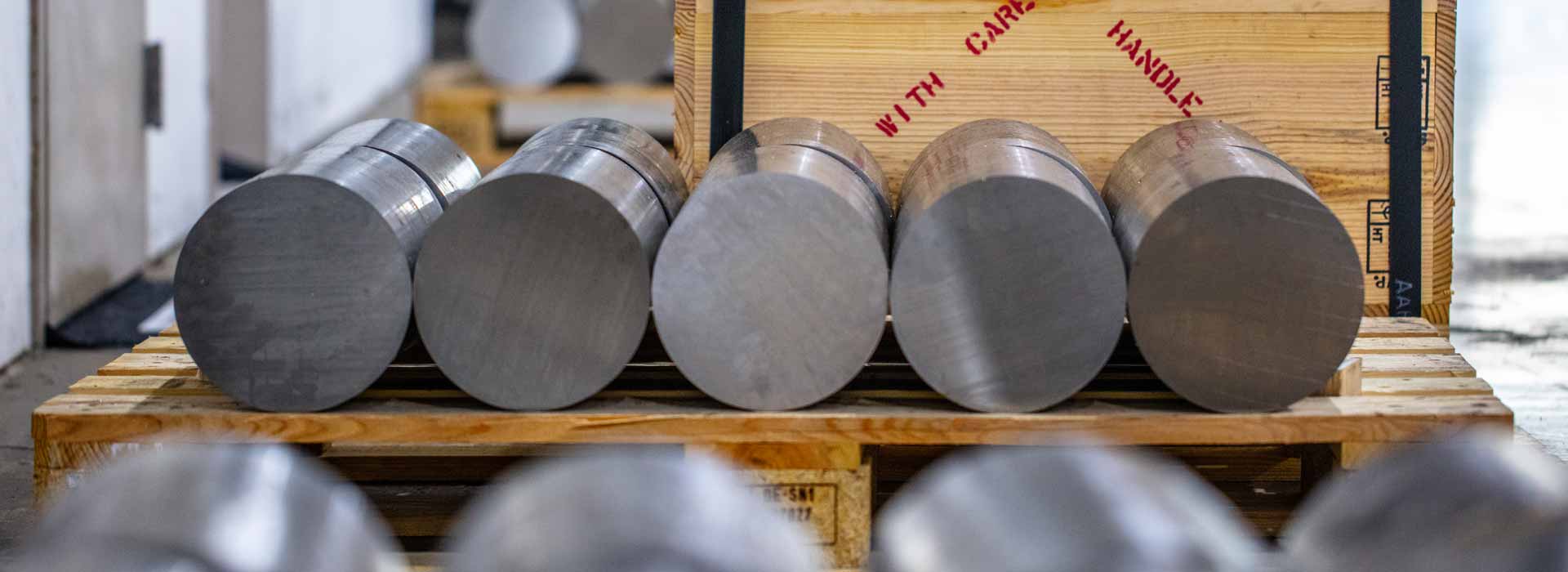Perfectly flat. As pertaining to sheet, strip or plate. Refer to Stretcher Leveling.
Heating metal to above the critical range and appropriately cooling to develop the greatest possible commercial softness or ductility.
Steel, normally made in the basic open-hearth furnace or by the basic oxygen process with carbon less than 0.10% and manganese in the 0.20-0.50% range, completely annealed.
(No.5 TEMPER) - Condition of maximum softness commercially attainable in wire, strip, or sheet metal in the annealed state.
A method whereby the raw slit edge of metal is removed by rolling or filing.
Removal of carbon from the outer surface of iron or steel, usually by heating in an oxidizing or reducing atmosphere. Water vapor; oxygen and carbon dioxide are strong decarburizers. Reheating with adhering scale is also strongly decarburizing in action.
The process of cold working or drawing sheet or strip metal blanks by means of dies on a press into shapes which are usually more or less cup-like in character involving considerable plastic deformation of the metal. Deep-drawing quality sheet or strip steel, ordered or sold on the basis of suitability for deep-drawing.
(In steel making) - Removing gases from the molten metal by means of a vacuum process in combination with mechanical action.
Allotropic modification of iron, stable above 2552??F. to melting point. It is of body-centered cubic crystal structure.
Removal of oxygen. In steel sheet, strip, and wire technology, the term refers to heat treatment in a reducing atmosphere, to lessen the amount of scale. (See Controlled Atmosphere Furnaces.)
Lines of markings caused on drawn or extruded products by minor imperfections in the surface of the die.
A concave surface departing from a straight line edge to edge. Indicates transverse or across the width.
A hardened and tempered spring steel strip, usually blued, produced from approximately .85 carbon cold rolled spring steel strip speciallly selected for straightness and good edges. Sometimes hand straightened or straightened by grinding and cut to desired lengths. This product is used in the printing trade as a blade to uniformly remove excess ink ("dope") from the rolls; hence its name.
Reheated after hardening to a temperature below the critical for the purpose of changing the hardness of the steel. (See Tempering.)
A term given to an annealed and polished high carbon tool steel rod usually round and centerless ground. The sizes range in round stock from .013 to 1?" diameter, Commercial qualities embrace water and oil hardening grades. A less popular but nevertheless standard grade is a non-deforming quality. Drill Rods are used principally by machinists and tool and die makers for punches, drills, taps, dowel pins, screw machine parts, small tools, etc.
Finish obtained by cold rolling on polished rolls without the use of any coolant or metal lubricant, of material previously plain pickled, giving a burnished appearance.
The property of metals that enables them to be mechanically deformed when cold, without fracture. In steel, ductility is usually measured by elongation and reduction of area as determined in a tensile test.
The trade name applied to the first aluminum-copper- magnesium type of age-hardenable alloy (17S), which contains nominally 4% Cu, ?% Mg. The term is sometimes used to include the class of wrought aluminum-copper-magnesium alloys that harden during aging at room temperature.
